Main menu
You are here
KDet
The goal of this page is to serve as support for the paper submitted to RATSP 2015.

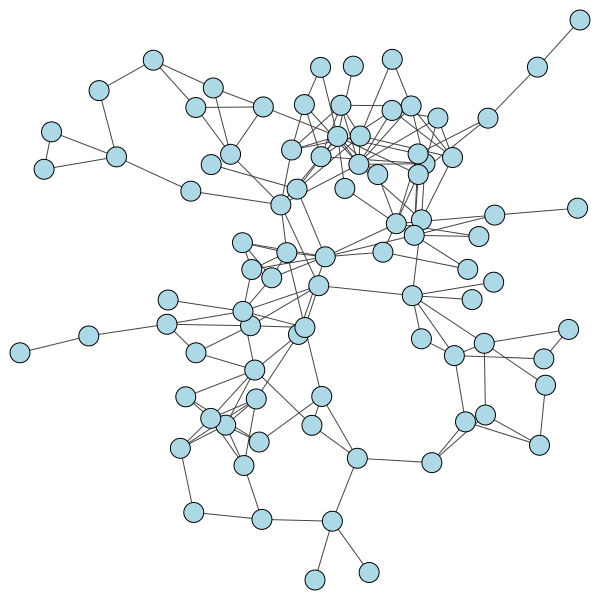
Following image shows the state size needed when using sketches of 500B.
And the next one is about the traffic overhead needed to be shared per link during each protocol interval:
Finally, we show the probability of detection when choosing randomly placed nodes as faulty and running the protocol with an specified k.

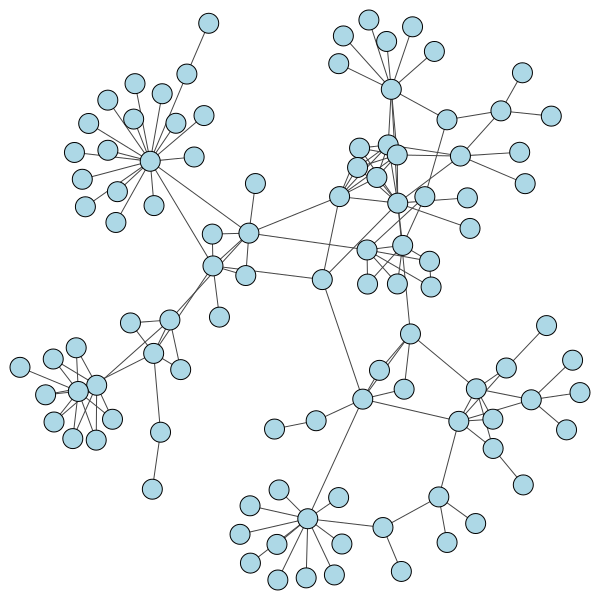
Following image shows the state size needed.
And the next one is about the traffic overhead:
And the overhead:
Finally, the probability of detection when choosing randomly placed nodes as faulty and running the protocol with an specified k.
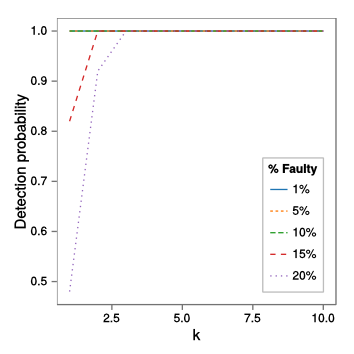
Overhead:
Finally, the detection probability:

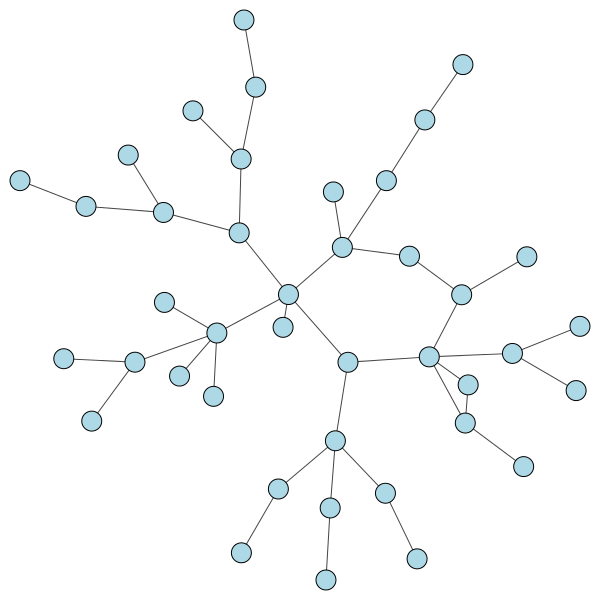
State size:
Traffic overhead:
Finally, the probability of detection when choosing randomly placed nodes as faulty and running the protocol with an specified k.
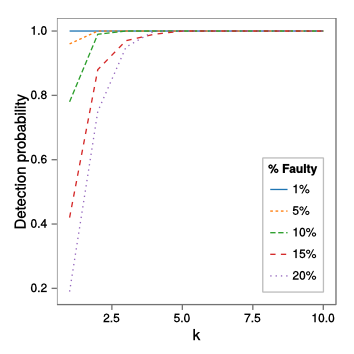
FunkFeuer topology changes
To study how often path change compared with how often neighborhood change we have used FunkFeuer data. On the next figure we can see how neighborhoods are in fact much more stable than paths, even when considering a small part of a path.
KDet Analysis
On the paper we present the expected state size and overhead per link on the Guifi.net Barcelones area. Here we sehow the results for some other networks, and see that they are consistent regardless of the network topology.Ebone
Ebone and Telstra networks are some of the topologies measured by the RocketFuel mapping engine. Ebone has 87 nodes and 161 links:
Following image shows the state size needed when using sketches of 500B.
And the next one is about the traffic overhead needed to be shared per link during each protocol interval:
Finally, we show the probability of detection when choosing randomly placed nodes as faulty and running the protocol with an specified k.

Telstra
Telstra is a 104 network with 151 links:
Following image shows the state size needed.
And the next one is about the traffic overhead:
4 by 4 Lattice
On the other hand, let's see what happens for more regular topologies, for instance, for a 4 by 4 lattice, the state size will be:And the overhead:
Finally, the probability of detection when choosing randomly placed nodes as faulty and running the protocol with an specified k.

10 by 10 Lattice
And similar for a 10 by 10 lattice:Overhead:
Finally, the detection probability:

Guifi.net Barcelones
Finally, just for comparison, the Guifi.net Barcelones network:
State size:
Traffic overhead:
Finally, the probability of detection when choosing randomly placed nodes as faulty and running the protocol with an specified k.

